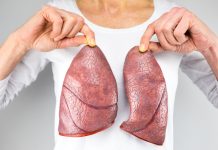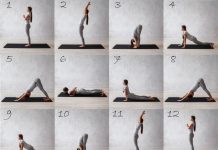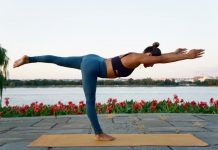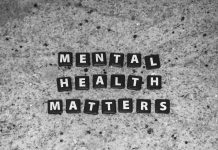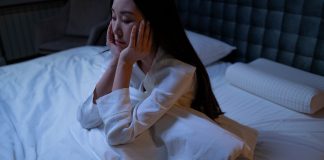At night most of us snuggle into bed to read a book or watch our favorite TV show, before we fall asleep. Some people get deep sleep while others get up sweating in the middle of the night, woken by a nightmare. Last but not the least are the “Dreamers.” What really happens as we drift off to sleep?
Interestingly, even though our physical body is in a passive state, our brain is following a pattern of activities forming a sleep cycle. One sleep cycle of 90-120 minutes follows the stages to reach NREM sleep and REM sleep.
Stage 1: Feeling drowsy as the eye movement becomes slow. Brain waves and muscle activity are slowing too
Stage 2: Light Sleep with when the person is still somewhat alert and can wake up easily. Eye movement has stopped as the Brain Wave Frequency has decreased. This comprises of 40-60% of total sleep time.
Stage 3: Shake a person really hard to wake him up! That person is in the Deep NREM Sleep Stage, which consists of Delta waves. This recuperative Stage is very essential. Growth hormones are released for the body to repair and heal.
Stage 4: The Dreaming Stage is called REM Sleep (rapid eye movement).The Brain waves are very active, similar to when we are awake. The eye movement is rapid, from side to side. A person woken up during this time can feel groggy. This is called sleep inertia, which can sometimes last for several hours! This lasts for 5-15% of the total sleep time. The first REM begins 90 minutes, after we fall asleep. By the second and third sleep cycles, the REM period becomes longer. Everyone dreams, even though they may not remember. During this period, muscle paralysis take place, a protective instinct of our body, so we don’t act out our dreams. One may be experiencing a vivid dream where one jumps off the cliff. But the muscle paralysis does not allow us to ACT this out!
On an average, we go through four to five sleep cycles at night. Sleep cycles are different for different age groups. Newborns and infants need more sleep to enhance the growth hormone.
Young adolescents tend to fall asleep later at night due to physiological changes. As we grow older the number of hours of sleep we need becomes more regular
A catnap is being asleep in Stage 2 and waking up before this period ends. Our body feels somewhat rested.
If we cross Stage 2 to enter Stage3 (deep sleep), in the afternoon, we have difficulty falling asleep at night. Getting too much REM sleep causes problems like irritability and anxiety.
A sleep cycle is a natural way for the body to refresh our brain while performing the restorative function for the body. It’s a good idea to keep regular sleeping hours. We should try to go to sleep and get up at the same time every day. Practicing a relaxing bedtime ritual at night aids in falling asleep. Stress can interfere with our sleep cycle. Deep breathing and meditation practices aid in improving our quality of sleep, as it reduces anxiety. Exposing yourself to Sunlight in the morning helps us to wake up. During the day, we should take breaks to expose oneself to the daylight. Our body responds to the natural light and prevents drowsiness during the day. At night, we need to keep the room dark and lights dim to help the body fall asleep.
“How many hours of sleep does our body need” is a very popular question. There is no right answer for this as each individual need is different. But if you wake up feeling refreshed, happy and your body feels energetic – Congratulations you have unlocked the code for your sleep cycle and solved the puzzle.
47 Most Famous Motivational Quotes of All-Time
49 Greatest Love Quotes
37 Inspirational Quotes that Will Change Your Life



